Keynote session Tuesday 25 August:
Circular economy and reuse of materials
This keynote session is arranged by Aarhus University and University of Southern Denmark.
|
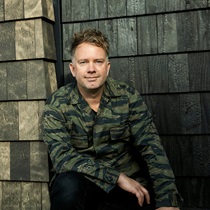 |
Keynote speaker: Kasper Guldager, Co-founder Home.Earth, Denmark
Co-author of the 'Cradle to Cradle Manual' and 'Building a Circular Future’. Visiting professor in architecture in Munich, Delft and Calgary. Kasper is also a circular economy advisor for the Danish Government and the City of Amsterdam, and recently was appointed Chairman for the development of European Standards for Circular Construction.
|
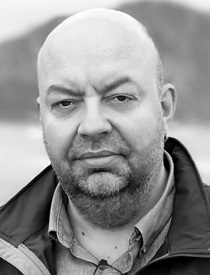 |
Keynote speaker: Morten Birkved, Professor (WSR), Head of Center, SDU Life Cycle Engineering, Department of Green Technology, University of Southern Denmark
Experienced Professor with a demonstrated history of working both in the environmental consulting industry as well as in academia. Strong research and education skills within Life Cycle Assessment (LCA), Sustainable Development, Absolute Sustainability and Climate Change.
|
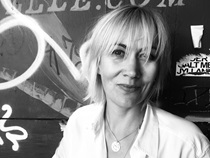 |
Moderator: Pernille Berg, Science Manager, Bloxhub, Denmark
Passionate and experienced when it comes to leadership, research, innovation, sustainability, and entrepreneurship Pernille has worked extensively with research and innovation throughout her career. From establishing incubators for student startups and startups to creating applied research communities Pernille has extensive experience with creating new educations, new learning communities and environment, and international collaborations, incl. EU projects’ steering group responsibilities. Furthermore, Pernille has experience in developing fundraising strategies as well as project portfolios. Pernille is a staunch advocate of network collaboration, social innovation, knowledge-sharing and ideation. Pernille has throughout the years been a keen moderator on the international scene addressing sustainability, research, innovation, and entrepreneurship.
As part of BLOXHUB’s vision to ensure the development of sustainable cities Pernille is responsible for running the programme Science Forum which entails research networks, BLOXHUB Academy and Science Talks.
|
Keynote session Wednesday 26 August:
How the COVID-19 pandemic will reshape the built environment
This keynote session is arranged by Technical University of Denmark.
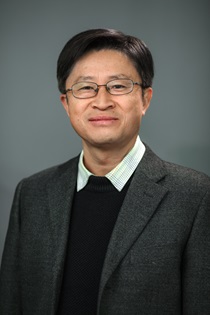 |
Keynote speaker: Xudong Yang, Professor and Associate Dean, School of Architecture, Tsinghua University, China
How to make the built environment safe
The outbreak of COVID-19 has reminded us the basic question that may have long been overlooked: are our built environments really safe? Attention must be paid to the increasing sensitivity of the public to potential health implications of the built environment. The presentation first analyzes the range of ventilation dilution rates in a number of SARS and COVID-19 infection and non-infection cases. Different levels of ventilation requirements for “regular” air quality and infectious disease transmission control are discussed. Means to achieve different levels of goals are discussed with specific examples. The presentation will conclude by listing a number of opportunities and challenges to make built environments safer. The presentation will also propose some ideas how to make simulation tools readily useful rather than simply academic exercises.
Dr. Yang is presently the Professor of Building Science and Associate Dean in the School of Architecture, Tsinghua University, China. His research interests center on fundamental and practical aspects of indoor environmental quality and sustainable buildings within the following thematic areas: (1) understanding and modeling various indoor air pollutant sources and sinks; (2) immunized technologies for the built environment, and (3) energy intervention and environmental improvement in urban/rural communities. Dr. Yang is a Fellow of American Society of Heating, Refrigerating, and Air-Conditioning Engineers (ASHRAE), and Fellow of International Society of Indoor Air Quality and Climate (ISIAQ). He currently serves as the editor of Building and Environment, founding Editor-in-Chief emeritus of Building Simulation, an executive committee member and representative of China in the IEA-EBC (Energy in Buildings and Communities), and various Chinese ministries and cities. Dr. Yang has received numerous awards including the Research Career Award from the US CDC (2000), the New Investigator Award from ASHRAE (2000), the Advance in Science and Technology award from the Chinese Ministry of Education (2000), the ASHRAE Distinguished Service Award (2008), the Award for Natural Sciences from the Chinese Ministry of Education (2013), and the ASHRAE Exceptional Service Award (2018).
|
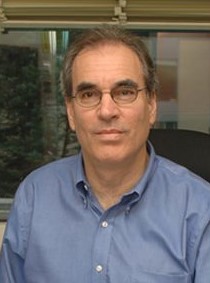 |
Keynote speaker: Dr. Andrew Persily, U.S. National Institute of Standards and Technology (NIST), USA
The Role of Airflow and Contaminant Transport Simulation in Making Buildings Safer
The need to maintain the safety of building occupants in light of the COVID-19 pandemic and other challenges, both known and unanticipated, has again highlighted the impacts of ventilation and airborne contaminant transport on human exposure. This presentation will discuss how building airflow and contaminant transport simulation can support efforts to make building’s safer in response to various airborne contaminant exposures. It will start with a brief review of airflow and contaminant transport simulation, followed by examples of the application of simulation tools to specific airborne hazards such as smoke management in response to building fires and the threat of intentional biological and chemical releases. The presentation will discuss how simulation tools can be used to address exposure risks associated with airborne contaminants, including understanding exposure and disease transmission events after they have occurred and studying the effectiveness of control measures intended to reduce these exposures. A number of challenges in the application of existing simulation tools to these questions will also be reviewed including the availability of input data, zones with nonuniform contaminant concentrations, coupling with HVAC simulation tools and more detailed models of airborne contaminant transport mechanisms.
Dr. Andrew Persily is Chief of the Energy and Environment Division at the U.S. National Institute of Standards and Technology (NIST), where he has worked for four decades after earning a Ph.D. in Mechanical and Aerospace Engineering from Princeton University. His research has focused on indoor air quality and ventilation in commercial and residential buildings, including the development and application of measurement techniques to evaluate airflow and indoor air quality performance and of multi-zone airflow and contaminant dispersal models. He has published more than 300 journal articles, conference papers and NIST reports. Dr. Persily was a vice-president of ASHRAE from 2007 to 2009, and is past chair of ASHRAE Standard 62.1 (Ventilation for Acceptable Indoor Air Quality) and Standard 189.1 (Design of High-Performance Green Buildings). He is a Fellow of ASHRAE, ASTM and ISIAQ, and recipient of the NIST Bronze, Silver and Gold medals.
|
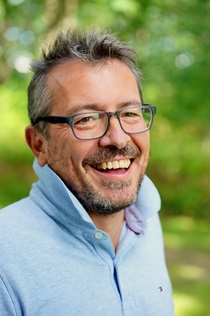 |
Moderator: Associate Professor Pawel Wargocki, Technical University of Denmark
Assoc. Prof. Pawel Wargocki (54) graduated from the Warsaw University of Technology in 1990. He received his Ph.D. from the Technical University of Denmark in 1998, where he has been teaching and performing research ever since. He has >25 years of experience in research on human requirements in indoor environments.He is best known for his seminal work, demonstrating that poor indoor environmental quality affects office work and learning performance. Other work influenced the requirements for ventilation and air cleaning. Recent research includes studies on emissions from humans, sleep quality, and performance of green buildings and gas-phase air cleaning and air quality in aircraft. He has collaborated with leading research institutions, universities, and industrial partners worldwide, including the National University of Singapore, Jiaotong University in Shanghai, Syracuse Center of Excellence, United Technologies, Velux, and Google. He stayed as a guest professor at Pufendorf Institute at Lund University, Waseda University, and the National University of Singapore. He was President and long-standing board member of the International Society of Indoor Air Quality and Climate (ISIAQ), Vice President of Indoor Air 2008, and Chair of ASHRAE committees. Presently he is a President of the Academy of Indoor Air Sciences. He has received several awards for his work, including the Rockwool Award for Young Researchers, ASHRAE Ralph Nevins Award, Environmental Health Award, Distinguished Service Award, ISIAQ’s Yaglou Award, and Best Paper Awards in Indoor Air. He published extensively.
|
Keynote session 27 August:
Bio-based materials - benefits and challenges
This keynote session is arranged by BUILD - Aalborg University.
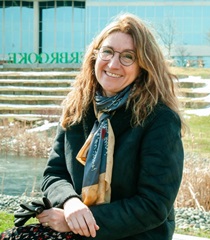 |
Keynote speaker: Professor Dominique Derome, Université de Sherbrooke, Canada
Dominique Derome is professor at the Department of civil and building engineering, Université de Sherbrooke, Canada, and holds a Tier 1 Canada Research Chair tier 1 in Multi-scale Building Physics. She looks at heat and mass transfer processes in the built environment, the related impacts on durability of materials (namely wood) and on thermal comfort and its inhabitants. Her research proposes innovative and multi-scale approaches of the highly coupled physical processes that occur in the built environment, intensively integrating advanced computational and experimental methods. This multidisciplinary research leads to solutions developed for a sustainable living environment, resilient in the face of climate change, possible higher risks of heat waves and impacts on the urban environment. Previously she was for 11 years senior scientist at the Swiss research institution Empa (2008-2019) and 10 years professor at Concordia University, Montreal, Canada. She is the Editor-in-Chief of the Journal of Building Physics.
|
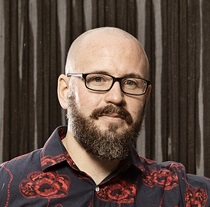 |
Keynote speaker: Emil Engelund Thybring, Associate Professor, University of Copenhagen, Denmark
Emil Engelund Thybring is Associate Professor at the University of Copenhagen, Denmark. His research centres around moisture in wood and its effect on the properties and performance, in particular on the durability of wood in wet, outdoor environments. In recent years, his focus has been on understanding the wood-moisture relation in wood treated by non-toxic chemical modification to improve the durability. He has an MSc in Civil Engineering (2007) from the Technical University of Denmark, and a PhD (2011) from the same university within wood materials science. He has worked as R&D consultant within on wood and biobased materials for 5 years at the Danish Technological Institute (2008-2013). Before joining the University of Copenhagen in 2015, he worked as postdoc for two years (2013-2015) at the Swiss Federal Institute of Technology in Zürich (ETH Zürich) and Swiss Federal Laboratories for Materials Science (Empa), Switzerland. He is member of the editorial board for the journal Wood Material Science and Engineering, and National Coordinator for Denmark in the Northern European Network on Wood Science and Engineering.
|